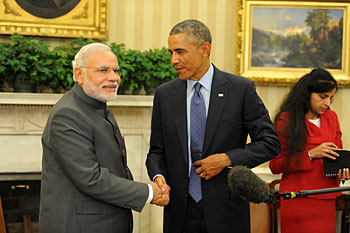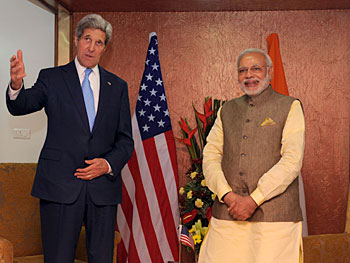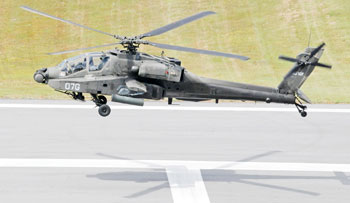INDIAN ARMED FORCES CHIEFS ON
OUR RELENTLESS AND FOCUSED PUBLISHING EFFORTS

SP Guide Publications puts forth a well compiled articulation of issues, pursuits and accomplishments of the Indian Army, over the years

I am confident that SP Guide Publications would continue to inform, inspire and influence.

My compliments to SP Guide Publications for informative and credible reportage on contemporary aerospace issues over the past six decades.
Expectations from Obama’s Visit
 |
By Lt. General P.C. Katoch (Retd) Former Director General of Information Systems, Indian Army |
There is excitement in the air about the impending visit of President Obama later this month. He will spend about two and a half hours as chief guest at the Republic Day parade on 26 January, breaking laid down security protocol for a US President limited to 20 minutes in the open. That it is the second visit by Obama to India and first by any US President at the Republic Day parade is well known. Secretary of State John Kerry attended the Vibrant Gujarat Summit and later met Prime Minister Modi at New Delhi.



US Under Secretary for Acquisition, Technology and Logistics arrives on January 22. Obama’s visit is expected to witness inking of a new 10-year defence framework taking the 2005 defence framework signed by defence ministers of both countries to the next level. the defence framework pact of 2005 had outlined agenda ranging from The new 10-year bilateral defence framework is to outline a series of steps to bolster the defence partnership including upgrading scope and intensity of joint military exercises, closer cooperation in intelligence sharing for countering terrorism, maritime security, countering proliferation of WMDs and, significantly, incorporation of the Defence Trade and Technology Initiative (DTTI) augmenting the existing mechanism of the Indo-US Defence Planning Group that has been meeting every six-months post 9/11. It may be recalled that the DTTI was formalized in September 2013 when Ashton Carter (now US Defence Secretary) then Deputy Secretary for Defence had led a delegation to New Delhi and the US had offered ten technologies to India. The issue also came up in 2014 during visit of then US Defence Secretary Chuck Hagel to India but apparently some issues have yet to be ironed out; perhaps in addition to red tape on both sides, also lack of clarity about the initiative itself. The high point of US Defence Secretary Chuck Hagel’s visit to India is the offer he made last week of joint development of seven defence technologies. The DTTI represents US commitment to build an indigenous Indian industrial base by pre-screening projects for co-production, and eventually, co-development. There are over 20 items ranging from anti-tank missiles to launch systems for aircraft carriers that the US has offered to India under DTTI. The two countries are setting up a task force to quickly evaluate and decide on unique projects and technologies which will have a transformative impact on bilateral defence relations and enhance India's defence industry and military capabilities. Over the past decade, the US has bagged defence deals worth $10 billion displacing Russia from the top position in the last three years. Other deals in the pipeline include: 22 Apache attack helicopters at the cost of $1.4 billion; 15 Chinook heavy lift helicopters at the cost of $1.1 billion, and; 4 additional P-81 maritime patrol aircraft costing $1 billion. It is obvious that the India side would like those US companies to participate in the DTTI who already have joint ventures with Indian companies, bringing in FDI and that technologies coming initially should also be open to being exported for long term sustainability of such projects. Energy security too will be high on agenda. It is obvious that the geopolitical situation will be discussed between President Obama and PM Modi, some of which may be behind closed doors. Aside from pushing for more sales in Indian markets including in the defence sector, the US would be more focused on the Indo-Pacific, seeking enhanced cooperation by India. The US may even still try to push for India joining the US-led BMD and the Proliferation Initiative (PSI) bandwagon and inking foundational military agreements like LSA, CISMOA and BECA all of which India has resisted in the past. From the Indian viewpoint, US looking askance at Pakistan’s proxy war on India and continuing military and financial aid to Pakistan, collusive China-Pakistan threat to India, possible Chinese missile deployments in Gilgit-Baltistan to support operations in IOR, and stability of the Af-Pak region, Middle-East and Iran are important issues that need serious discussion to evolve comprehensive approach suiting national interests of both countries. Such focused discussions approach are vital to take the Indo-US strategic cooperation to the required level.





